An old and new city enveloped by green space
For much of its length this walk goes through The Nene Park, one of the largest contemporary natural spaces in any British city; and to one of the country’s finest medieval buildings, Peterborough Cathedral.
BEST FOR
‘Architectural Inspirations’
| Ancient Buildings & Structures (pre-1740) | Peterborough Cathedral, The Guildhall, Longthorpe Tower |
| Georgian (1714-1836) | The Old Custom House |
| Victorian & Edwardian (1837-1918) | Roads around Central Park (not on route) |
| Industrial Heritage | History of the brick industry in the museum |
| Modern (post-1918) | The Lido, the Key Theatre |
| ‘Green Spaces’ | |
| Parks, gardens, squares, cemeteries | Nene Park, Central Park (not on route) |
| Natural landscapes | The Boardwalks |
| Rivers, canals, lakes | River Nene |
| Stunning cityscape | Peterborough Cathedral Tower (selected dates) |
| ‘Fun stuff’ | |
| Great ‘Pit Stops’ | Café Clarkes, The Cathedral Coffee Shop |
| Quirky Shopping | Westgate Arcade, City Market |
| Places to visit | Longthorpe Tower, Peterborough Museum, Flag Fen (outside the city) |
| Popular annual festivals & events | Peterborough Festival (late June), CAMRA Beer Festival (Aug) |
City population: 186,500 (2011 census)
Ranking: 27th largest city in UK
Date of origin: Bronze Age
‘Type’ of city: A new town grafted onto a cathedral city
City walkability (www.walkscore.com): 52/100 ‘Somewhat Walkable’
City status: since time immemorial; designated a ‘New Town’ in 1967
Some famous inhabitants: John Clare (poet), Andy Bell/Erasure (pop music), Ernie Wise (comedian), Louis Smith (gymnast)
Films/TV series shot here: Octopussy (1983: Nene Valley Railway)
THE CONTEXT
Peterborough has always had a very significant position on the edge of the Fens, set on one of the first inhabitable pieces of raised land, as evidenced by the famous Flag Fen settlement to the south of the city which dates back to the Bronze Age.
The area was settled by the Romans and became an established market town. The Anglo-Saxon period saw the construction of a monastery which later became Peterborough Cathedral. Much of the wealth of the city derived from the resources that came out of the fens.
However, it was the 1850 opening of the Great Northern Railway’s main line from London to York that transformed it from a market town to an industrial centre, particularly noted for its brick manufacture and engineering.
And the city was transformed a second time in 1967 when it was awarded New Town status, the first new town to be built around an established town; this led to the city’s population increasing threefold in a single generation from 70,000 to 200,000 as the townships were created.
But because the process was carefully planned by the Peterborough Development Corporation, there were also two huge benefits; a well thought-out road system that whisks traffic around the city away from the residential areas; and germane to this walk, the creation of the immensely impressive Nene Park, one of the finest city green spaces anywhere in the UK.
THE WALK
I did this walk with a work colleague and friend who has lived in Peterborough all her life and brought up a family here; she loves its combination of facilities, friendliness, big open spaces and the ease of getting around.
We began the walk near her house in Thorpe Wood, which consists of a canopy of oak and ash with hazel and field maple below. Some of these oaks are very old trees, testament to the careful preservation that took place when the new parts of the city were being built. The uncanny thing was that we felt as if we were in the middle of a country wood but in fact we were alongside Longthorpe on one side and the Nene Parkway on the other. One moment later we crossed a footbridge over the traffic of the Nene Parkway, and then back again immediately to tranquil greenery.
It is here at Longthorpe that the Romans settled in the first century (43AD), establishing a fort overlooking the river, covering 11.2 hectares (27 acres). Today we saw strangely clad men brandishing their weapons and wheels, but golf caddies and clubs rather than chariots and swords.
Nene Park, which we soon reached, was conceived as part of the town’s 1968 expansion master plan. The Nene Park Trust was tasked “to provide for the recreation of the public by the provision of a park for the benefit of the inhabitants of Peterborough and visitors with the object of improving the conditions of life for such persons.”
What is remarkable about Nene Park is its variety of landscapes and sheer scale. At 1, 022 hectares (2,535 acres), it is one of the largest city parks in the country; and it has a mix of natural habitats, informal areas and visitor attractions, including woodland, flood plain meadow and arable fields; it even has a steam railway that runs through it along the old Nene Valley line.
But perhaps most amazing is the sheer number of outdoor pursuits it facilitates, from golf to sailing to windsurfing to rowing to horse riding to running to birdwatching to yoga to cycling and much more. Pretty much every Saturday my son gets down here to run in the 5k Peterborough Fun Run, which regularly attracts 200 people of all ages and abilities, and includes people running with pushchairs and dogs. And once they have got over the finish line and recovered their breath they always have one thing in common – a huge smile on their faces. Open spaces create happy people.
Ask anyone what they like about living in Peterborough and the park will come pretty high up the list if not top. What I really love about this huge space is that you can pretty easily get lost in it too. There are many twists and turns and many untended areas which makes it feel truly as if you are in the country – and every way you look there is green.
There’s one other remarkable thing about Nene Park: it is entirely self-funded through rental income from commercial and Park properties, concessions and investments at no cost to the taxpayer. A model methinks for the creation of large open spaces in cities today.
As we headed into the park, we came to the first of several lakes, Overton Lake. As part of the construction of the roads in and around Peterborough in the 1970s, more than five million tonnes of gravel were extracted from the ground that now form these lakes.
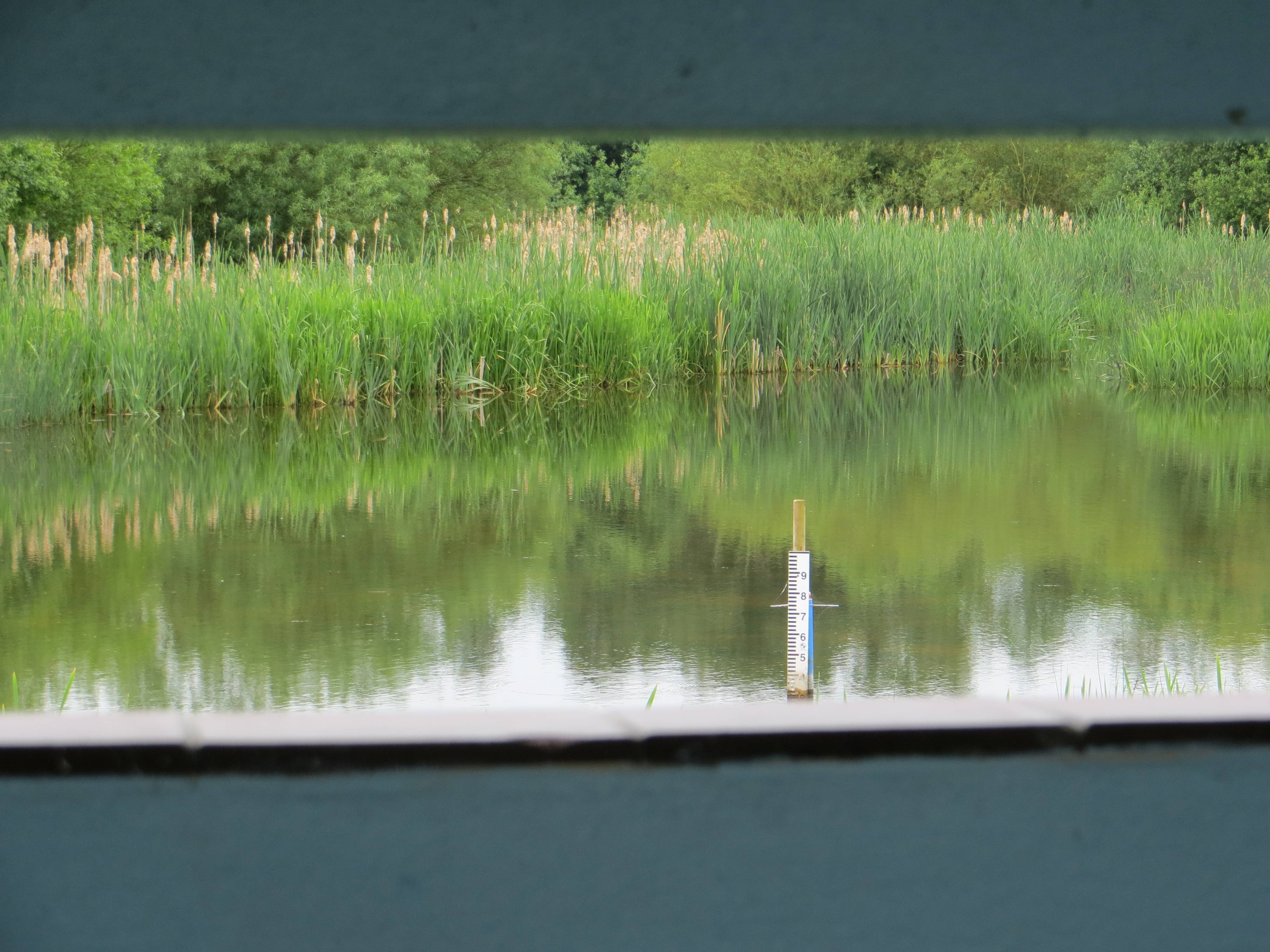
Heading south, we skirted past a couple of bird hides and then crossed over the Nene Valley steam railway line. This was another piece of careful planning by the Peterborough Development Corporation, who bought the old Nene line. It re-opened as a steam railway run by enthusiasts in 1977.
Since then well over 150 films, commercials and TV series have use of the made Nene Valley Railway. Some have been major productions like Octopussy, and Dirty Dozen- Next Mission while television companies have based episodes of series such as Secret Army, Reilly Ace of Spies and Hannay using the railway as an integral part of the plot.
The Nene Valley Railway lends itself naturally to filming by virtue of having a number of features fit for screen. The railway has seven and a half miles of track running over and alongside a river, traverses meadowland, cuttings, urban areas, passes an industrial complex and runs through a country park. A rather neat summary of what you will find on this walk too.
But the Corporation looked forwards in its vision as well as backwards, and set up Peterborough Sculpture Trust Collection, which is sited in Nene Park at Thorpe Meadows and includes works by Sir Anthony Caro, Lee Grandjean, Miles Davis and Antony Gormley. For a full map of the sculptures visit www.peterboroughsculpture.org
Once past the rowing and canoeing course, we headed south into the Boardwalks, an area that feels completely wild, but is often flooded and boggy so you will need sturdy footwear. The Boardwalks are an amphibian reserve, with many different areas: ponds of varying sizes and depths, scrub, marsh, tussocky grassland, and many types of willow, all providing excellent habitats.
As we approached the Town Bridge, so the path narrowed and the greenery gave way to apartments looking over the river. Just on the other side of the bridge we spied The Old Custom House, a Napoleonic war prisoner transfer station and also one of the oldest buildings in the city, dating back to 1790. It serves today as a base for the Sea Cadets.
The Key Theatre was built in 1973, another piece of the jigsaw in trying to create a new town with a diverse range of facilities. But it took a while to find its mark, struggling between the traditions of an old regional town rep and a new, dynamic modern take. Today, with a second, smaller auditorium, it is fleet of foot and understands its audience well. The building itself works well, and is especially impressive when lit up at night. Standing on the riverbank with public access on all sides of the building, the design blends well with three sides of the theatre being finished in hand made brick and the front having vertical windows above a recessed concrete pillared foyer.
The Lido is a boisterous expression of art deco, opened in 1936, it will set your heart racing if you are an art deco fan; beautifully preserved and one of the last remaining outdoor lidos in the UK. It tends to polarise opinion between regulars who can think of no better place and occasional visitors who tend to grumble about the coldness of the water or the sparseness of the changing rooms. But there is no doubt that it has a spot of magic about it.
From the 1930s we moved back many centuries to one of the most sublime examples of Gothic architecture in the country. Peterborough Cathedral is a stunning, beautiful building, one of the most important 12th-century Norman buildings in England to have remained largely intact, despite extensions and restoration. Admire the magnificent Early English Gothic West Front. Discover the resting places of two famous Queens: Katharine of Aragon’s grave and Mary Queen of Scot’s original resting place. Explore the exquisite stonework around the building including the Anglo-Saxon ‘Monk’s Stone’.
Moving out through the Cathedral Gate, we looked across to the 17th-century Guildhall, built in 1671 by John Lovin. It stands on columns, providing an open ground floor for the butter and poultry markets which used to be held there. This square has been much improved in recent years and has now given the old Peterborough a central focus again. The old and the new have never really sat comfortably together in this city; mainly because when the Queensgate Centre was built in 1982, although it catapulted Peterborough at a stroke into the major league of shopping centres, it involved the destruction of many historic buildings and the dismantling of the original street pattern. Views across town are often dominated by car parks, making the cathedral and the market square feel still more like architectural oases in a concrete desert.
Our walk took us back along the northern edge of Nene Park, past the stunning elegance of Thorpe Hall. What makes this house unusual is that it was one of the very few mansions built during the Commonwealth period, for the Lord Chief Justice Oliver St John.
While Parliamentary soldiers were in Peterborough in 1643 during the civil war, they had ransacked the cathedral. Parliament disposed of Church property to raise money for the army and navy and the parliamentarian Oliver St John bought the lease to the manor of Longthorpe and built Thorpe Hall. In 1654 it was described by the author John Evelyn as “a stately place…built out of the ruins of the Bishop’s Palace and cloisters.” Ah well, it has certainly been put to very worthwhile use in recent years as a Sue Ryder Hospice.
We finished the walk at Longthorpe Tower, which displays one of the most complete and important sets of 14th century domestic wall paintings in northern Europe. This varied ‘spiritual encyclopaedia’ of worldly and religious subjects includes the Wheel of Life, the Nativity and King David.
We experienced a diverse mix of the new and the old on our ramble, but in general I sensed the two eras had failed to assimilate with each other. It still feels after all these years as if two cities have been forced together and the coalescence is incomplete. The biggest harmonising element is undoubtedly the impressive Nene Park, which with its vast green spaces knits the townships and the city centre together and gives an overall character to the new city.
WALK DATA
Distance: 12 kms (7.5 miles)
Typical time: 3 hours
Height Gain: none
OS Map: Explorer 227 – Peterborough
Start & Finish: Thorpe Wood Nature Reserve Car Park, PE3 6SS. Where the Thorpe Rd meets Holywell Rd. You could also start and finish the walk from the station (PE1 1QL)
Terrain: flat, easy going; can be wet underfoot if there has been a lot of rain, especially the Board Walk
The Route
- Walk south through Thorpe Wood from the car park, then take a right to cross over the Nene Parkway by the footbridge
- Cross the Thorpe Rd and then proceed SW along the edge of the golf course (site of the old Roman Fort) to Bluebell Bridge
- Cross the Bluebell Footbridge across the River Nene. Continue onwards until you reach the Ham Bridge, at which point you cross left over it. (If you would like to go around Overton Lake at this point, it’s an extra 1.8kms. There’s a café on the other side)
- Then take the path bearing round to the left (S), which soon begins to run alongside the river again, with Ham Mere and the bird hide on your right. Cross the Goldie Bridge and then the Nene Valley railway line
- Turn immediately left towards the city centre, on the south side of the tracks along a tarmacced path
- Cross back over the railway and river at the lock and sluices, and then take the path under the Nene Parkway
- Walk along the south side of the Rowing Lake, enjoying the many interesting sculptures
- Then, at the Boathouse Pub, head right back (S) towards the river, and the route takes you along the fascinating Boardwalks
- Head E through the Boardwalks and eventually the path that rejoins the main riverside path. Proceed to the Town Bridge, climb up the steps, cross the main road and walk towards the Key Theatre
- From the Key Theatre, head N past the exquisite Art deco Lido
- Cross the Bishop’s Rd into the SW corner of the tiny but charming Bishop’s Rd Gardens. Exit out the NE side, and proceed through the cathedral precinct gates and thence to the cathedral
- From the west front of the cathedral, head out through the main gate into the market square, with the Guildhall in front of you. Proceed west down Church St, then Cowgate and take the underpass at Bourges Boulevard to the main railway bridge
- Immediately after you have crossed the railway bridge, take the steps down to your left and go south down River Lane back onto Thorpe Meadows
- Follow the route back west along the northern side of the meadows this time, until you reach the pub/hotel again by the rowing lake
- Head north from the hotel car park up to the roundabout, cross Thorpe Rd and then the continuation of Thorpe Rd
- Take a public footpath through a narrow gap in the hedge leading across the field up to Thorpe Hall. Pass by the entrance to Thorpe Hall, and then take a footpath just to the right of a car park at the far end of the Hall, leading onto Thorpe Park Rd. Turn left, and then right into Thurlestone Close, through to Harewood Gardens
- At Harewood Gardens turn left towards Melrose Close and then cut through to the Thorpe Rd
- Cross over left to Longthorpe Tower and then take the estate path back to The Thorpe Wood nature reserve. Turn right in the woods and return to the car.
A detailed Ordnance Survey map of the walk can also be found at www.walkingworld.com , walk no. 7455
GREAT PIT STOPS
The Ferry Meadows Café (Tel: 01733 234493) overlooks the beautiful Overton Lake. It is a slight detour on your route (at the end of Step 1), but gives you a great view of this side of the park.
The Cathedral Coffee & Cookies Coffee Shop, in the cathedral precincts, is open Mon-Sat 10.00am to 4.00pm. We especially recommend the cakes!
If you are looking for a good meal with views of the river, then we would recommend Café Clarkes at the Key Theatre (Tel: 01733 561465 www.cafeclarkes.co.uk)
QUIRKY SHOPPING
Westgate Arcade, alongside the Queensgate Shopping Centre, is a little oasis of independent shops in a city that is mostly chains. The City Market in Northminster also merits a visit – meat, fish, veg and good banter.
PLACES TO VISIT
Peterborough Museum, Priestgate, PE1 1LF (Tel: 01733 864663). A 2-minute detour from the cathedral precinct, the museum merits a visit for its history of the area, notably Roman artefacts and the original manuscripts of the poet John Clare. They run an excellent city history walk every Saturday at 2pm.
Longthorpe Tower, Longthorpe Tower, Thorpe Road, PE3 6LU, open weekends from April-October. Notable for its medieval wall paintings from the 14th century.
DISCOVER MORE
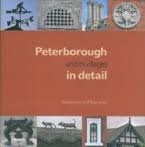 Read: Peterborough and its villages in detail – a photographic celebration of the architectural details of the city’s buildings.
Read: Peterborough and its villages in detail – a photographic celebration of the architectural details of the city’s buildings.

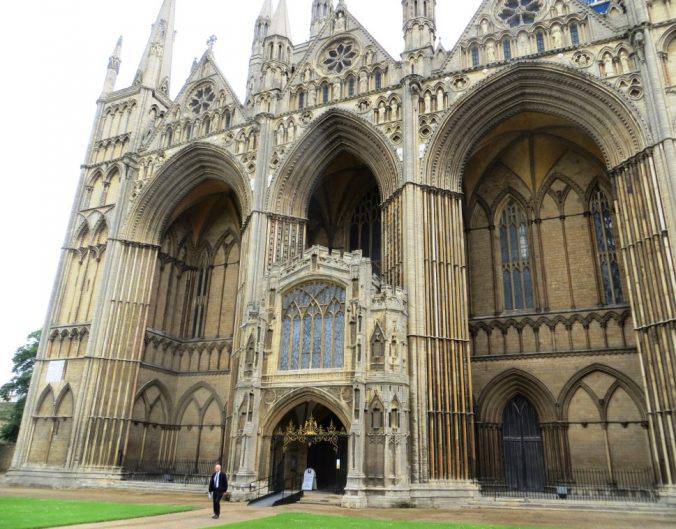
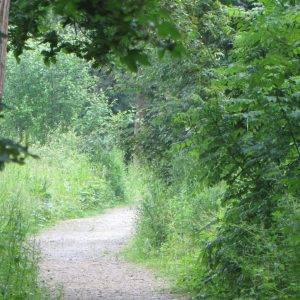
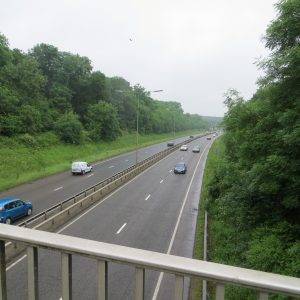
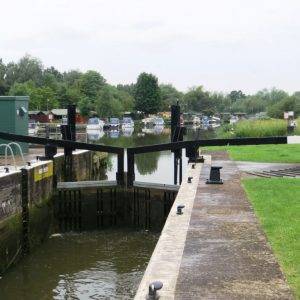
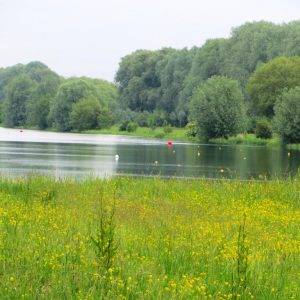
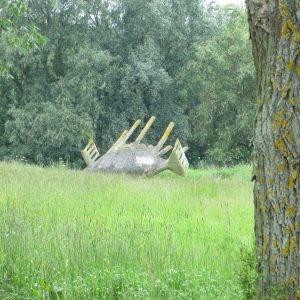
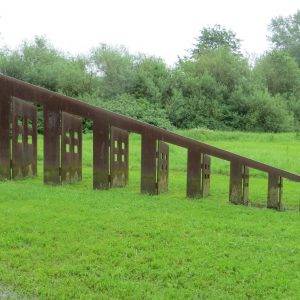

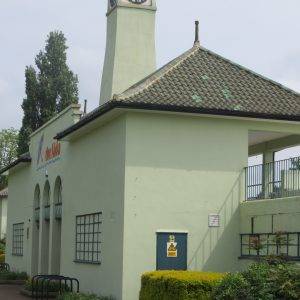

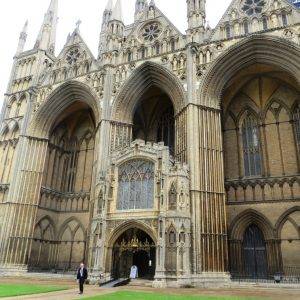

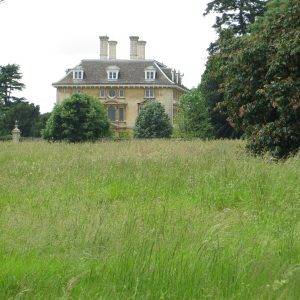
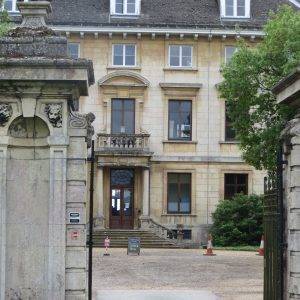
Leave a Reply